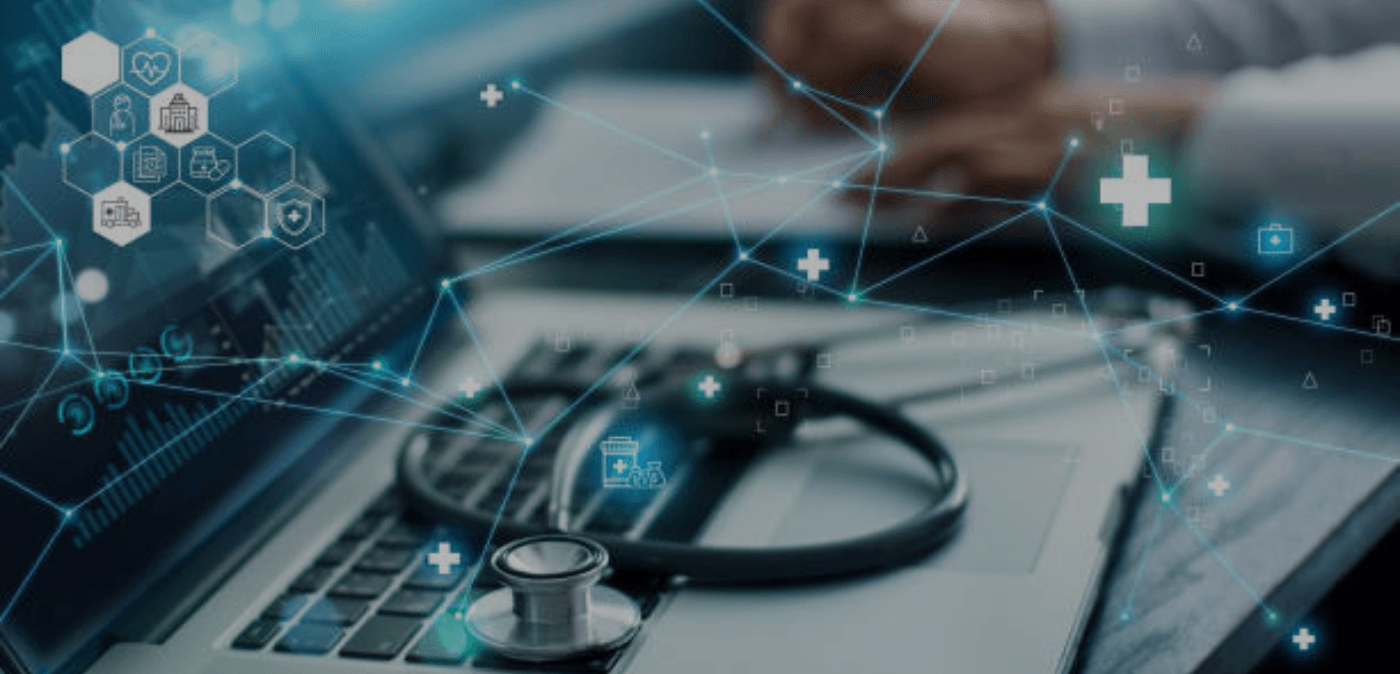 By Jophin November 26, 2025
min read
By Jophin November 26, 2025
min readThe complete guide to connected medical devices
Healthcare delivery is moving from episodic care to continuous, data-driven patient engagement. Medical device connectivity is a core enabler of this shift – allowing devices, sensors, and clinical systems to communicate seamlessly, improve care quality, reduce operational costs, and support remote patient monitoring at scale.
Across hospitals, health systems, and digital-first care models, connected medical devices have become foundational. For executives, their value lies in measurable improvements, smarter decision-making, reduced avoidable admissions, streamlined workflows, and more informed, patient-centric care, especially when supported by robust medical device integration services that ensure seamless data flow across the care ecosystem.
This guide helps you understand what medical device connectivity is, how it works, why it matters, the challenges, use cases, compliance expectations, and how healthcare organizations can implement it successfully.
What is medical device connectivity?
Medical device connectivity refers to the ability of medical equipment, sensors, wearables, implants, and health monitoring systems to automatically collect, transmit, and exchange patient data with healthcare applications such as EHRs, analytics engines, clinician dashboards, or cloud systems.
In simple terms:
Devices are no longer “isolated.” They continuously communicate, automate workflows, and provide real-time data for clinical decision-making.
Connected medical devices can include:
- Wearables (ECG patches, fitness trackers)
- Monitoring systems (glucose monitors, BP cuffs, pulse oximeters)
- Infusion pumps and ventilators
- Imaging systems
- Smart implants
- In-hospital devices integrated via wired or wireless networks
The value lies not just in collecting data, but in transforming it into actionable intelligence.
Why medical device connectivity matters for healthcare organizations
Connected devices enable real-time data sharing, improve clinical decision-making, reduce errors, and enhance patient outcomes across care settings.
Healthcare leaders are facing increasing pressure to:
- Improve efficiency
- Reduce staff workload
- Prevent manual errors
- Enable value-based care
- Make faster, evidence-based decisions
- Support more patients without increasing costs
Medical device connectivity directly supports these needs by enabling:
- Real-time vitals and clinical data
- Automated updates to EHR systems
- Reduced manual data entry
- Faster diagnostics and intervention
- Improved compliance documentation
- Better patient experience and care visibility
For organizations operating in hybrid or remote care models, connected medical devices also extend clinical oversight outside hospital walls – making continuous care possible.
How connected systems function inside a clinical environment
Medical devices capture, transmit, and integrate patient data through secure networks, interoperability standards, and clinical applications for continuous monitoring and care.

While architectures vary, most deployments follow this flow:
1. Data capture
Device sensors capture patient vitals or operational data (heart rate, insulin levels, oxygen saturation, drug dispensing, etc.).
2. Local processing (Device/Edge layer)
Some filtering and analytics may occur on-device or at an edge gateway to reduce transmission load.
3. Secure transmission
Data is transferred through:
- Wi-Fi
- Bluetooth
- Cellular (4G/5G)
- Ethernet
- LPWAN
4. Integration & standardization layer
Data is standardized using interoperability frameworks (e.g., HL7, FHIR, DICOM, IEEE standards).
5. Data storage & application layer
Information flows into:
- EHR systems
- Population health platforms
- Clinical dashboards
- Patient apps
- Analytics platforms
6. Clinical use
Care teams receive real-time insights for decisions, alerts, remote monitoring, reporting, and patient engagement.
This creates a closed, digital feedback loop – improving care outcomes while reducing wasted effort.
Types of devices that power a digitized care experience
Connected medical devices fall into multiple categories:
1. Patient monitoring devices
Examples:
- Glucose monitors
- Blood pressure monitors
- Connected ECG
- Oxygen saturation trackers
- Sleep apnea monitors
Ideal for chronic care and at-home monitoring.
2. Wearables & Smart Health sensors
Non-invasive, patient-friendly devices such as:
- Smartwatches
- Adhesive biosensors
- Activity monitors
Useful for continuous, passive data collection.
3. Hospital-based connected devices
Examples:
- Infusion pumps
- Dialysis machines
- Ventilators
- Imaging systems
Connectivity reduces manual updates and supports faster clinical response.
4. Implants and connected implantable
Examples:
- Pacemakers
- Neurostimulators
These can transmit data continuously for proactive intervention.
Together, these devices build a digital care network capable of supporting real-time decision-making.
Core capabilities every integration platform should offer
Effective connectivity platforms typically offer:
1. Real-time data exchange
Instant and reliable data flow between devices and healthcare systems.
2. Support for healthcare interoperability standards
Such as:
- HL7 V2/V3
- FHIR APIs
- DICOM
- IEEE standards
This ensures structured, readable, and consistent data exchange.
3. Secure communication
Compliance-ready encryption, user authentication, and role-based access control.
4. Integration with EHR and clinical software
Automatic updates eliminate manual data entry and delay.
5. Remote monitoring and device management
Includes:
- Performance monitoring
- Remote firmware updates
- Failure alerts
- Usage analytics
6. Scalable cloud or hybrid architecture
Supports growth without infrastructure burdens.
Benefits of medical device connectivity for healthcare providers
Better patient outcomes
Continuous monitoring enables early detection, faster interventions, and personalized treatment decisions.
Higher clinical efficiency
Automated data capture reduces manual documentation, freeing clinicians to focus on patient care.
Reduced errors
Automatic integration minimizes risks associated with handwritten data or delayed updates.
Lower operational costs
Connectivity helps:
- Reduce unnecessary hospital visits
- Improve asset utilization
- Minimize device downtime
Stronger regulatory compliance
Audit-friendly logs and automated data trails simplify reporting and oversight.
Enabling remote care at scale
Organizations can supervise more patients without expanding staff or physical facilities.
Common integration roadblocks (and practical ways to overcome them)
Even with strong adoption, organizations face common challenges:
1. Device compatibility & legacy integration
Hospitals often use multi-generation equipment from different vendors.
Solution:
Use standards-based interoperability frameworks and API-driven integration platforms.
2. Cybersecurity risks
Connected devices are now prime targets for breaches.
Solution:
Zero-trust architectures, encryption, ongoing monitoring, segmentation, and continuous patching.
3. Data overload
More data doesn’t always mean better decisions.
Solution:
Apply:
- Data filtering
- Edge analytics
- Intelligent alerting
- AI-powered summarization
4. Regulatory pressure
Compliance requirements evolve continuously.
Solution:
Build systems with forward-compatible compliance controls and reporting capability.
Implementing connected medical devices at scale requires standardized workflows, compliance-ready data exchange, and seamless communication between devices and clinical systems; areas where expert medical device integration services significantly reduce time, cost, and risk.
Key interoperability standards in medical device connectivity
To ensure that devices “speak the same language,” healthcare relies on formal interoperability standards such as:
- HL7 – Traditional hospital messaging framework
- FHIR (Fast Healthcare Interoperability Resources) – Modern, API-based exchange
- DICOM – Medical imaging data
- IEEE 11073 – Point-of-care device communications
- IHE Profiles – Workflow harmonization across medical systems
Using these standards reduces vendor lock-in and simplifies ecosystem-wide data exchange.
Compliance frameworks you must consider before integrating medical devices
Organizations must comply with strict medical, security, and data protection frameworks. Common requirements include:
United states
- HIPAA
- Mandates privacy, secure transmission, and audit controls.
- FDA guidance & cybersecurity controls
- Ensures devices are safe, patchable, and resilient.
European union
- MDR (Medical device regulation)
- Defines device classification, safety, documentation, and clinical risk controls.
- GDPR
- Regulates patient data privacy, consent, and data rights.
Other markets
Countries like Australia, Singapore, and the Middle East follow their own regulatory standards based on similar global principles.
Decision-makers must ensure that systems deliver compliance at the design level, not as an afterthought.
Cybersecurity essentials for protecting clinical data
Cybersecurity now carries the same weight as clinical safety. A modern connectivity solution must provide:
- End-to-end encryption
- Role-based access and strong identity management
- Secure transmission protocols
- Real-time threat monitoring
- Secure firmware and OTA updates
- Audit logs and forensic traceability
- Business continuity and downtime procedures
- Device vulnerability management
- NIST, FDA, ISO 80001, and IEC 62304 alignment where applicable
In short: A connected medical device must be secure by design, secure in operation, and secure during maintenance.
Where integrated devices make a difference: Real-World examples
Remote patient monitoring
Chronic care patients (e.g., diabetes, COPD, cardiac disease) can be monitored continuously from home.
ICU & emergency care
Clinicians receive real-time vitals and automated alerts – reducing response time.
Medication and infusion management
Connected pumps track dosage, prevent incorrect administration, and report activity automatically.
Hospital device fleet management
Operation teams can:
- Track uptime
- Monitor performance
- Remotely update firmware
- Detect early signs of device failure
Telehealth programs
Connected medical devices enrich telemedicine sessions with objective clinical data.
A Step-by-Step breakdown of the integration process
Step 1: Define clinical and business objectives
Examples:
- Reduce readmission rate
- Improve care efficiency
- Introduce home-based monitoring
Step 2: Assess existing device & IT environment
Map what devices already exist and what can be integrated.
Step 3: Select a connectivity platform
Look for:
- Standards support
- Security
- Cloud scalability
- Real-time data exchange
- Integration flexibility
Step 4: Integrate with EHR and core systems
Standardize data exchange using FHIR, HL7, DICOM, and IEEE frameworks.
Step 5: Secure the connectivity ecosystem
Implement continuous monitoring, encryption, and role-based access.
Step 6: Train clinical users
Adoption is highest when workflows are simple and non-disruptive.
Step 7: Monitor, optimize, scale
Continuously analyze ROI and expand to more use cases over time.
How fortunesoft helps you achieve seamless medical device connectivity
Fortunesoft delivers end-to-end medical device connectivity solutions designed for security, interoperability, performance, and clinical usability. As a healthcare technology partner, we offer comprehensive medical device integration services that help healthcare organizations and MedTech companies:
- Integrate medical devices with EHR and cloud platforms
- Enable secure real-time data exchange
- Build FHIR, HL7, DICOM, and API-based interoperability
- Deploy remote patient monitoring and IoMT ecosystems
- Ensure HIPAA, FDA, MDR, and global compliance
- Implement cybersecurity and continuous threat monitoring
- Reduce integration costs and accelerate deployment
Our connectivity solutions are designed to shorten development cycles while improving reliability, scalability, and clinical readiness.
FAQs
What is medical device connectivity?
It is the ability of medical devices to automatically collect and exchange patient data with clinical systems such as EHRs, analytics dashboards, and remote monitoring platforms.
Why is it important for hospitals and healthcare providers?
It enables real-time clinical visibility, reduces manual work, improves care quality, and supports scalable remote care delivery.
Is medical device connectivity secure?
Yes, when implemented with encryption, identity management, continuous monitoring, regulatory compliance, and zero-trust architecture.
Which standards are used in medical device connectivity?
Common standards include HL7, FHIR, DICOM, IEEE 11073, and IHE interoperability frameworks.
What devices can be connected?
Wearables, patient monitors, infusion pumps, imaging systems, implants, and many other clinical devices.
Conclusion
Healthcare organizations today are competing on their ability to turn real-time clinical data into measurable value, and medical device connectivity is the engine that makes this possible. As care shifts to continuous monitoring, remote engagement, and data-powered decision-making, organizations that enable seamless communication between devices, systems, and clinicians gain measurable benefits: reduced operational inefficiencies, stronger clinical insight, improved patient outcomes, and better readiness for regulatory scrutiny.
For CEOs and technology leaders, the value is clear: connected medical devices transform fragmented data into unified intelligence, delivering the visibility needed to scale care quality without scaling costs. But success requires more than plugging devices into a network – it demands secure interoperability, structured data exchange, standards alignment, and smooth integration into existing clinical workflows.
If your organization is ready to modernize care delivery, improve efficiency, and build a scalable digital foundation, now is the time to establish a connected ecosystem powered by reliable medical device connectivity.
And with the right technology partner, you can accelerate adoption, minimize risk, and unlock clinical and financial ROI faster than ever.
Author Bio


 Facebook
Facebook Whatsapp
Whatsapp LinkedIn
LinkedIn Pinterest
Pinterest








 Start Chat
Start Chat